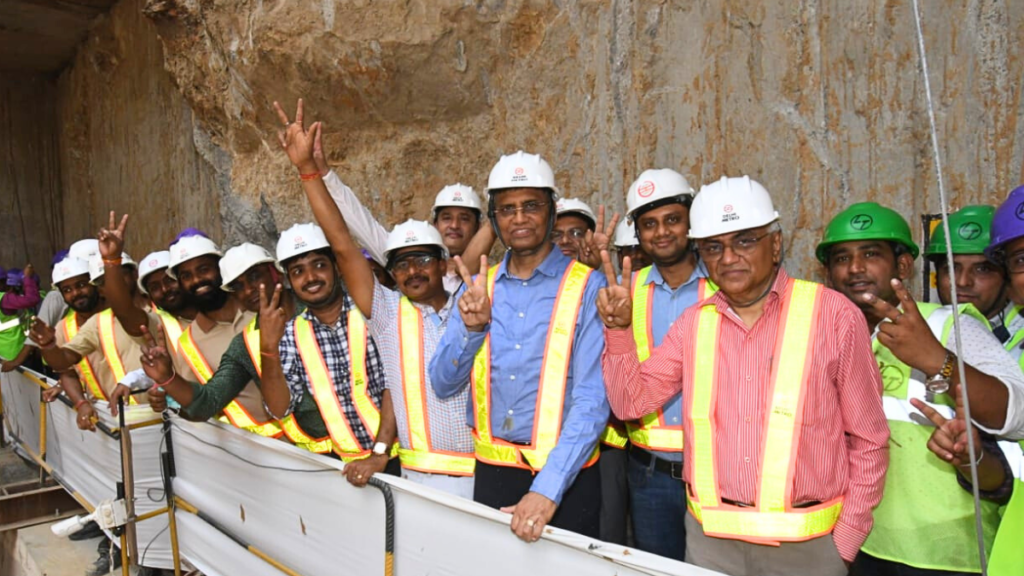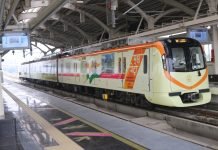A Quick Tour to Patna
Patna is the capital and largest city of the state of Bihar in India, known for its rich historical and cultural legacy. Historically known as Patliputra, the city is located on the southern banks of Ganges River, extending approximately 35 kilometers in length and 16 to 18 kilometers in width. In 2009, the World Bank ranked Patna as the second best city in India to start a business. The city serves as a home to several educational institutions, including the University of Patna, established in 1917.
Patna was ranked as the 21st fastest-growing city in the world and fifth fastest-growing city in India in 2010. The current metro area population of Patna in 2025 is 2,690,000, 2.16% increase from 2024. Patna witnessed a sudden increase in the pollution rate of the city over the time and soon became one of the most densely populated cities in India.
Due to the growing population the city started facing critical issues like traffic congestion on the roads which questioned the public transportation system of the city. To conquer these challenges, a metro system was proposed for the city. Patna Metro, a fast and reliable mode of public transport will efficiently alleviate the traffic congestion on the roads by reducing the dependency of residents on private vehicles. Furthermore, The introduction of the metro system in Patna will also enhance the economic growth of the city.

Patna Metro: Accelerating Patna’s Growth
Overview
- The Patna Metro is an ambitious rapid transit project aimed at transforming urban transportation in Patna, the capital of Bihar, India.
- Patna Metro Project is an under construction Mass Rapid Transit System (MRTS) for the city of Bihar.
- The Phase 1 of Patna Metro comprises two corridors and 24 stations. The project is estimated to cost Rs.13365.77 crore (approx).
- On 17 February 2019,The Hon’ble Prime Minister, Shri Narendra Modi laid the foundation stone of Patna Metro.

DPR & Approval
- Rail India Technical and Economic Service (RITES) was appointed to create the Detailed Project Report (DPR ) of the Patna Metro Project.
- On 9 February 2016, the Bihar state government approved the DPR prepared by RITES.
- On 25 September 2018, The Bihar government approved the constitution of Patna Metro Rail Corporation Ltd (PMRCL), a Special-Purpose-Vehicle (SPV) for the implementation of the Patna Metro project. Later on, PMRCL appointed Delhi Metro Rail Corporation (DMRC) as the General Consultant (GC) to assist the project’s implementation.
- On 6 February 2019, the Central Government approved the Patna Metro Project.
Revision of Alignment
In November 2019, the Delhi Metro Rail Corporation (DMRC) announced modifications to the Detailed Project Report (DPR) and the alignment for both metro lines.
Key changes included:
- Establishment of a second interchange at Khemni Chowk.
- Removal of the planned depot for Line-1 at Aitwarpur.
- Addition of two new stations at Ramkrishna Nagar and Jaganpura.
Funding Mechanism
- The Project is being developed under a Public Private Partnership Mode at an estimated cost of Rs.13365.77 crore.
- The 60% project will be partly financed through an INR 5521 crore Official Development Assistance (ODA) loan from the Japan International Cooperation Agency (JICA).
- The remaining 40% of the project will be funded by the state government and centre government.
- In November 2024, the state cabinet approved the allocation of Rs.115 Crores from the state plan fund. A portion of these funds will be utilised by DMRC track work, lift and escalator installations as well as the supply of train sets.
Key Specification
| Speed and Track | Top Speed: 80 kmphAverage Speed: 34 kmphTrack Gauge: Standard Gauge – 1435 mm |
| Electrification | 25 kV, 50 Hz AC OHE |
| Signalling | Communications-Based Train Control (CBTC) |
| Estimated Project Cost | Rs.13365.77 crore |
| Estimated Ridership | 2.10 lakh/day (2026) |
Contractor’s List
| Contract | Awarded |
| General Consultant | Delhi Metro Rail Corporation (DMRC) |
| PC-01: Construction of Line-2’s Malahi Pakri – New ISBT (6.1 km viaduct, 5 stations) | NCC Limited |
| PC-02: Construction of New ISBT Depot | Quality Buildcon |
| PC-03: Construction of Line-2’s Patna Junction – Rajendra Nagar underground twin tunnel section (8 km, 6 stations) | Larsen & Toubro (L&T) |
| PC-04: Construction of Line-1’s Danapur – Patlipura Ramp and Mithapur Ramp – Khemni Chak sections (8 km, 7 stations) | YFC Projects – MCL JV |
| PC-08R: Design and Construction of Single Tunnel (Subway) between Bihar and Patna Museum by Shield TBM | Larsen & Toubro (L&T) |
| PT-4R: Design, manufacturing & supply of UIC-60 Turnouts & Scissor Crossover | Voestalpine VAE VKN India |
| PT-7R: Manufacturing & Supply of 1200 MT 90 UTS, UIC 60, 13 m, Class A 880 Grade Rails, IRS-T-12-2009 for New ISBT Patna Depot | Steel Authority of India (SAIL) |
| PT-8R: Standard gauge track work (Ballasted, Embedded and Column lines) at New ISBT Depot | S.C. Agarwal |
Route Information
| Operational | 0 km |
| Under Construction | 22.1km |
| Approved | 8.8 km |
Phase 1
Line-1 (East – West Line): Danapur Cantonment – Khemni Chak
- Length: 16.86 km
- Type: Elevated & Underground
- Elevated: 9.36 km with 8 stations
- Underground: 7.5 km with 6 stations
- Number of Stations: 14
- Station Names: Danapur Cantonment, Saguna More, RPS More, Patliputra (formerly IAS Colony), Rukanpura, Raja Bazar, Patna Zoo (formerly JD Women’s College), Vikas Bhawan (formerly Raj Bhavan), Vidyut Bhawan, Patna Junction (interchange), Mithapur, Ramkrishna Nagar & Jaganpur and Khemni Chak (interchange)
Line-2 (North – South Line): Patna Junction Railway Station – New ISBT
- Length: 14.05 km
- Type: Elevated & Underground
- Elevated: 6 km with 5 stations
- Underground: 8 km with 7 stations
- Number of Stations: 12
- Station Names: Patna Junction (interchange), Akashvani (formerly Dak Bungalow), Gandhi Maidan, PMCH, Patna University, Moin Ul Haq Stadium, Rajendra Nagar, Malahi Pakri, Khemni Chak (interchange), Bhoothnath, Zero Mile and New ISBT.
| Updates 1. TBM Breakthrough In May 2024, TBM Buddha (DZ1091), deployed by L&T achieved a second breakthrough at Patna University Station of Line 2 under Package PC-03. The TBM was deployed from Moin-ul-Haq Station and constructed a 1494 m upline tunnel. The first breakthrough was achieved by TBM Mahavir in March 2024 at Patna University Station for the downline. |

Recent Update on the Patna Metro Project
Inspection of Priority Corridor
- In December 2024, Urban Development and Housing Minister, Nitin Nabin inspected the priority corridor of the Patna Metro Rail project. The priority corridor is the elevated section of Corridor 2 spanning 6.49 km.
- The priority corridor consists of five stations- Malahi Pakri, Khemnichak, Bhoothnath, Zero Mile, and ISBT. He also mentioned, “The civil work along the priority corridor connecting Malah connecting Malahi Pakri to New ISBT is complete,”.
Expected Completion Date
- In December 2024, Deputy CM Samrat Choudhary informed the state assembly that the priority corridor of the Patna Metro would become operational from August 15, 2025 He mentioned “Our target is to see that the metro rail in Patna becomes functional from August 15 next year,”
Benefits Associated with Patna Metro
1. Enhanced Connectivity: A metro system in Patna will enhance the connectivity in the city by linking the suburban areas and key destinations of the city. The comprehensive metro network will allow the residents of the city to commute to the different areas of the city seamlessly. Through this enhanced connectivity the residents of the city will have easier access to educational institutions and commercial zones.
2. Reduced Traffic Congestion: The introduction of a metro system in Patna will also reduce the traffic congestion on the roads by providing the residents with a fast and reliable mode of transport. Additionally, the metro system in Patna will reduce the residents’ dependency on private vehicles.
3. Economic Growth: The Patna Metro project will stimulate the economic growth of the city. The establishment of a metro system will increase employment in the city while the construction of metro stations will attract more business setups in the city which will boost the local economies.
4. Environmental Sustainability: By offering a sustainable and eco-friendly mode of transport like the metro system the city can achieve environmental sustainability. The adoption of a metro system will reduce the traffic congestion on the roads which will lower the emission and reduce the air pollution in the city, promoting a clean and safe environment.
Roadblocks in Patna Metro
1. Ridership Concern: Before the establishment of any metro project the ridership level always remains a primary concern. The lower ridership level may impact the financial viability of Patna metro project. Hence, achieving project ridership plays a very crucial part in making the project successful and sustainable for a long period of time.
2. Financial Constraints: The Patna Metro has been securing adequate funds from loan agreement with JICA and cabinet approval from state plan funds. However the project has not been able to achieve the 100% funding which may lead to the delays in the commissioning of the project.
3. Integration with the other modes of transport: Integrating the Patna metro with the existing modes of transport like buses and rickshaws is a major challenge. For any metro project to become reliable and successful it is very important to provide connectivity with other modes of transport so more people can opt for the metro as reliable and more convenient means of transport.
Conclusion
The Patna Metro project holds a great potential to ease the connectivity and decongest the city. The commissioning of Metro in Patna city will have multifaceted benefits as the project will link key areas in the city including Patna University with densely populated urban areas. The project will also attract businesses contributing to the city’s economic growth in the long run. However, challenges like achieving target ridership, securing full funding, and integrating with existing transport systems must be addressed to ensure success of the project. Additionally, authorities must ensure that Patna Metro remains economically viable for the residents. As the project progresses toward its completion, its success will depend on strong planning, timely execution, and effective coordination among stakeholders.





